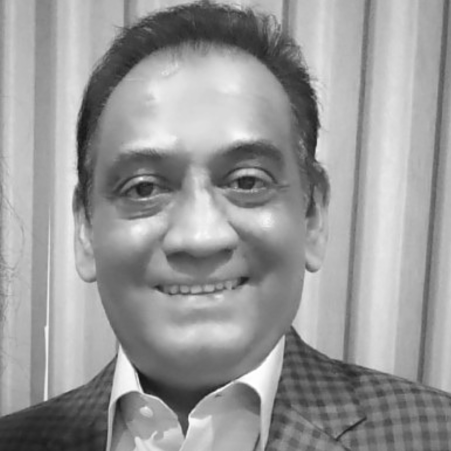Throughout the pandemic, product superstars continued to join us to share their vast knowledge about their chosen field. In case you missed something you might find valuable, we’ve assembled a few highlights from our San Jose/Bay Area Chapter Speaker Series in 2021 (and a couple of standouts from 2020!) to add to your summer product viewing.

Get to know the leaders driving product development in your own community.
Reserve Your Spot
Kelly McStay, Farimarkit Head of Product
Earlier this year, Fairmarkit Head of Product Kelly McStay shared ways that product managers can accelerate team development and create great product leaders.
On setting a team up for success
It all starts with formation and organization. Granted, these can be the most difficult parts of product management. Getting it right, though, can ensure success for your product team straight out of the gate.
“Product management can be really different everywhere. Your team needs to understand what your organization finds to be effective and successful in a lot of different aspects. Understand organizational success, your team’s position within it, and are those two things aligned.”
“Product management as a discipline is relatively young and the way that product teams get created within companies is pretty varied. Thinking about how the product stuff got done before you added a product team can help show where your team can actually be successful and effective in your organization.”

Watch the entire video right here on Products That Count.
Watch The Full Event
Google Product Lead Ravi Gampala
Ravi Gampala, Google Product Lead, joined our San Jose/Bay Area event to share product management best practices for when you’re preparing to get executive buy-in.
On stakeholder feedback and getting ahead of errors
It can be nerve-wracking to present to the executive team. Whether it’s simply informative or there are decisions on the line, it’s the job of the product manager to represent the project, topic, or product as well as possible in order to obtain that executive buy-in. Ravi captivates a packed zoom audience by starting with best practices on ways to gather feedback and catch errors before you enter the boardroom.
“Seek out other PMs to do spot checks to catch logical errors before presentation to stakeholders. In the process, validate the product using known examples. Being so close to the product can blind you from obvious problems that others may catch.”
“It’s your product manager obligation that you include input from stakeholders in your presentation. The sooner you share your deck, the better, this saves rework. Also, ensure the decision-makers provide their feedback, you should hear their perspective.”
“Remember that questions can be indicative of interest, so be receptive, not defensive, to questions. Solicit questions, encourage interaction, and answer directly with a smiling face.”

Watch the entire video to get all of Ravi’s insights.
Watch The Full Event
Workday Sr. Product Director Katie Holden
Katie Holden took over the Products That Count Speaker Series zoom room and shared concrete examples of successes and failures from both startups and larger enterprises working with horizontal product experiences.
What sets apart a horizontal product
It’s a trend that slipped under the radar of product management but is now driving multiple companies, like 2021 Product Award Winner, Airtable, to be market leaders. Product management for horizontal products will vary company by company, but the option can lend itself to multiple use cases across varied and dynamic verticals.
“For product managers and product leaders, it’s interesting to understand that you have a choice when you’re creating products, and one of those choices might be to be more horizontal.”
“Horizontal products are hard because, if you’re designing something that you want to scale horizontally across many vertical use cases, you’re effectively designing and delivering a product and go-to-market at the same time. You’re trying to do it where you crush one vertical, and leave room to get two verticals in the future.”

Watch the entire video to learn more about managing horizontal products.
Watch The Full Event
Head of Product at Loop Commerce, Subha Shetty
2021 has been an incredible year for our Speaker Series, but remember that all events past are also available to Products That Count members. Pulling from the archives of 2020, Subha Shetty, Head of Product at Loop Commerce, a Synchrony company, joined us in October to speak about product-led go-to-market strategies.
On the value of a product-led strategy
“The problem basically is that your costs are going up to acquire your customers, your customer’s propensity to pay is going down, and more than half of your customers are not going to come back if they have a bad experience. You don’t need to be a financial whiz to figure out that ultimately, this is not what a profitable company would actually be.”
“A go-to-market strategy is intended to ensure that your product launch reaches the right audience, with the right message, with the right positioning, and your audience understands what the value of the product is and the solution that you’re offering.”

Watch the full video to learn more about product-led strategy.
Watch The Full Event
Fmr Intercom Product Lead Emily Wang
Another legacy piece, Emily Wang, co-founder and CEO of Bento and former Intercom Product Lead, joined our San Jose Speaker Series in September to go deep on building frameworks for product development. She used her experiences at three different business models to explain frameworks and their development roles. She also discussed feedback, how it varies from different sources, and integrating it into product changes and resources.
On Applying Frameworks Appropriately
A company may have a framework built out, but it means nothing if not used properly. During the webinar, Wang explained how frameworks must be applied appropriately. She also gave a few examples of how this can be done.
“Frameworks are incredible ways and tools to simplify and communicate how we make decisions. But it only works to the extent it is applied appropriately to your business.”
“I know from personal experience, a lot of the literature I’ve read speaks to A/B testing and experimentation. And the first time I started working in B2B SaaS or an enterprise, I very quickly realized those actually didn’t apply.”

Watch the entire video to learn evergreen product frameworks.
Watch The Full Event
About the host
Maheep is a customer-focused Product Leader. He believes that a Product Manager wears multiple hats but should always champion the voice of the customer.